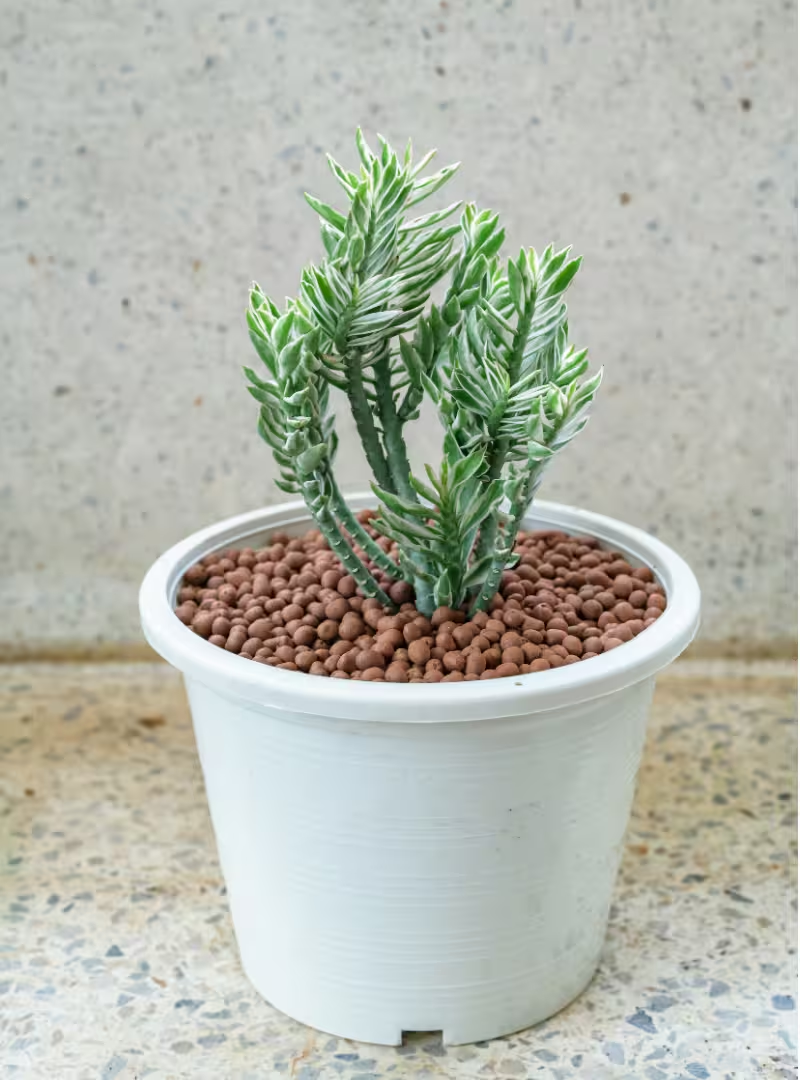The Ultimate Oranda Goldfish Encyclopedia
Discover everything about the majestic Oranda Goldfish - from their distinctive "wen" crown to comprehensive care techniques. This definitive guide covers all 16 varieties with detailed care instructions, tank requirements, disease prevention, and breeding tips to help you become an expert Oranda keeper.
8-12 inches
Average Adult Size
65-72°F (18-22°C)
Ideal Water Temperature
10-15 years
Average Lifespan
20+ gallons
Minimum Tank Size
16 Stunning Oranda Goldfish Varieties
Oranda goldfish come in an array of colors and patterns, each with unique characteristics. Below is the complete collection of all recognized Oranda varieties available worldwide:

Red Cap Oranda
Carassius auratusThe iconic variety featuring a silver-white body with a vibrant red wen (head growth) that resembles a crown. The red should only cover the wen, not the body.
Shop Red Cap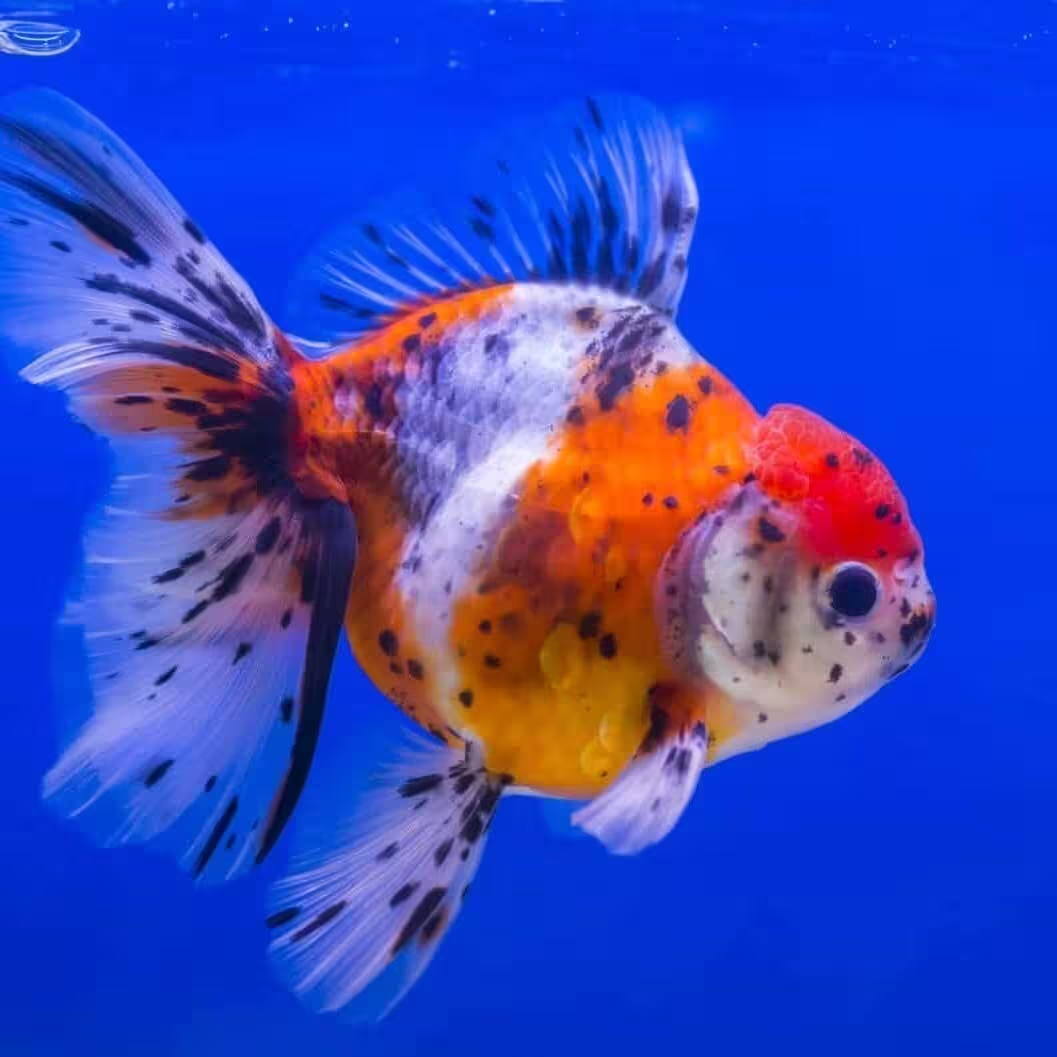
Calico Oranda
Carassius auratusA multicolored beauty with nacreous (pearly) scales displaying a mix of red, black, blue, and white patches. The pattern should be balanced and aesthetically pleasing.
Shop Calico
Black Moor Telescope Oranda
Carassius auratusA hybrid variety combining the telescope eyes of Black Moor with the wen growth of Oranda. Jet black coloration with protruding eyes and a developing head growth.
Shop Black Moor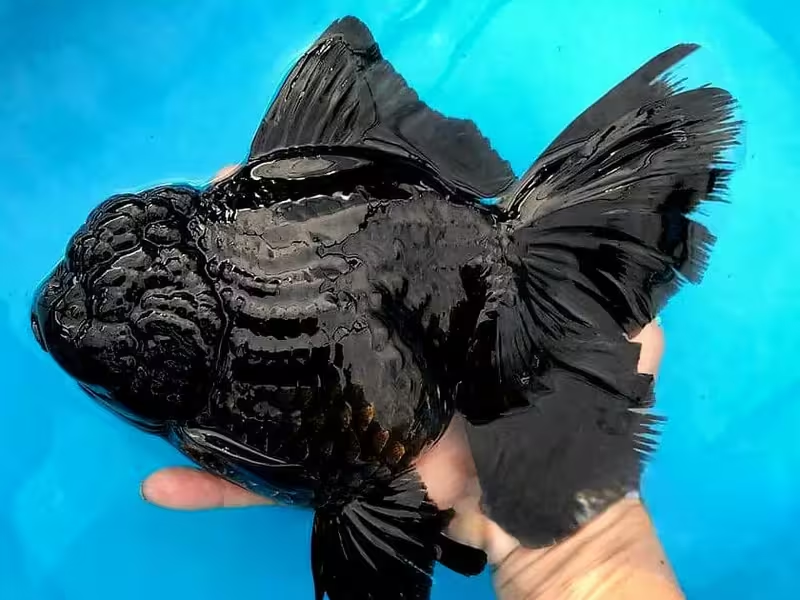
Black Oranda
Carassius auratusA solid black variety that may fade to gray with age. The wen should be well-developed and may appear slightly darker than the body. Requires excellent water quality to maintain color.
Shop Black Oranda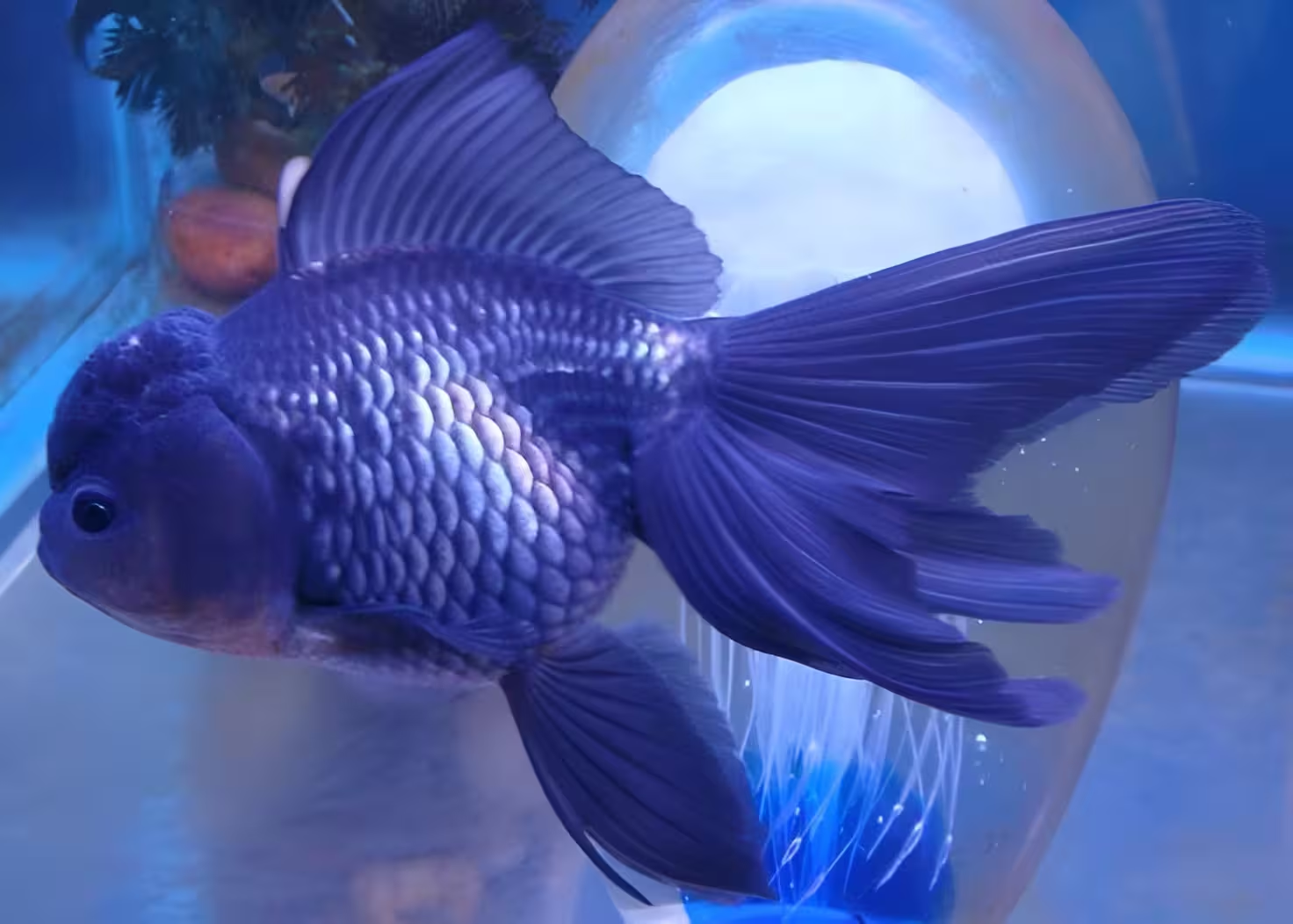
Blue Oranda
Carassius auratusAlso known as Seibungyo, this variety displays a unique bluish-grey silver coloration. The metallic scales create an iridescent effect under proper lighting.
Shop Blue Oranda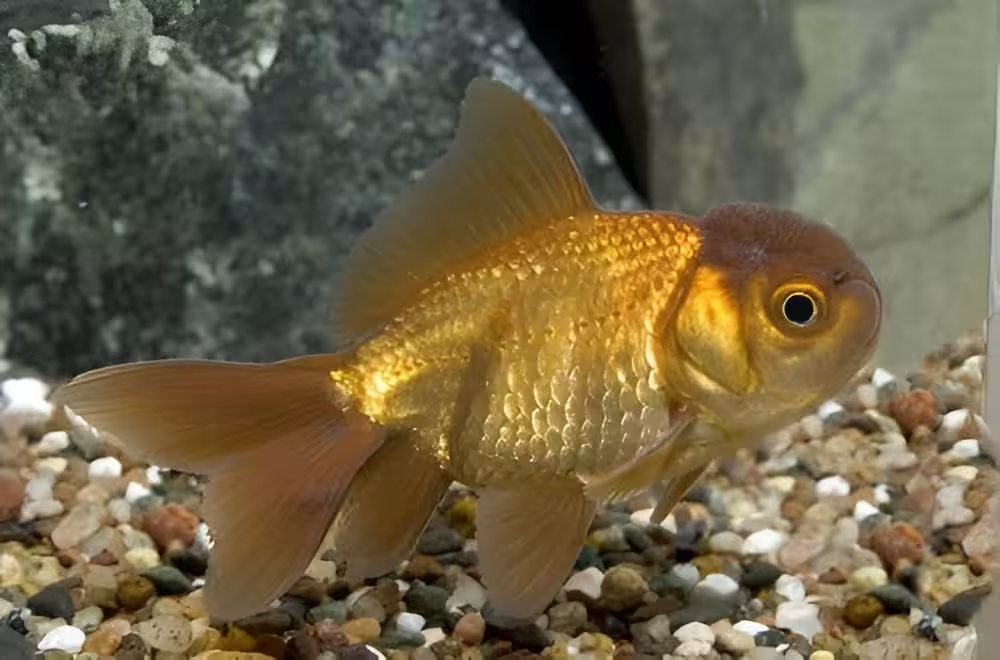
Chocolate Oranda
Carassius auratusA rich brown variety known as Chakin in Japan. The coloration resembles milk chocolate, often with a slightly lighter wen. Color intensity varies with diet and water quality.
Shop Chocolate Oranda
Panda Oranda
Carassius auratusA striking black-and-white bi-colored pattern resembling a panda bear. The contrast should be sharp with clearly defined color boundaries. The wen is typically white.
Shop Panda Oranda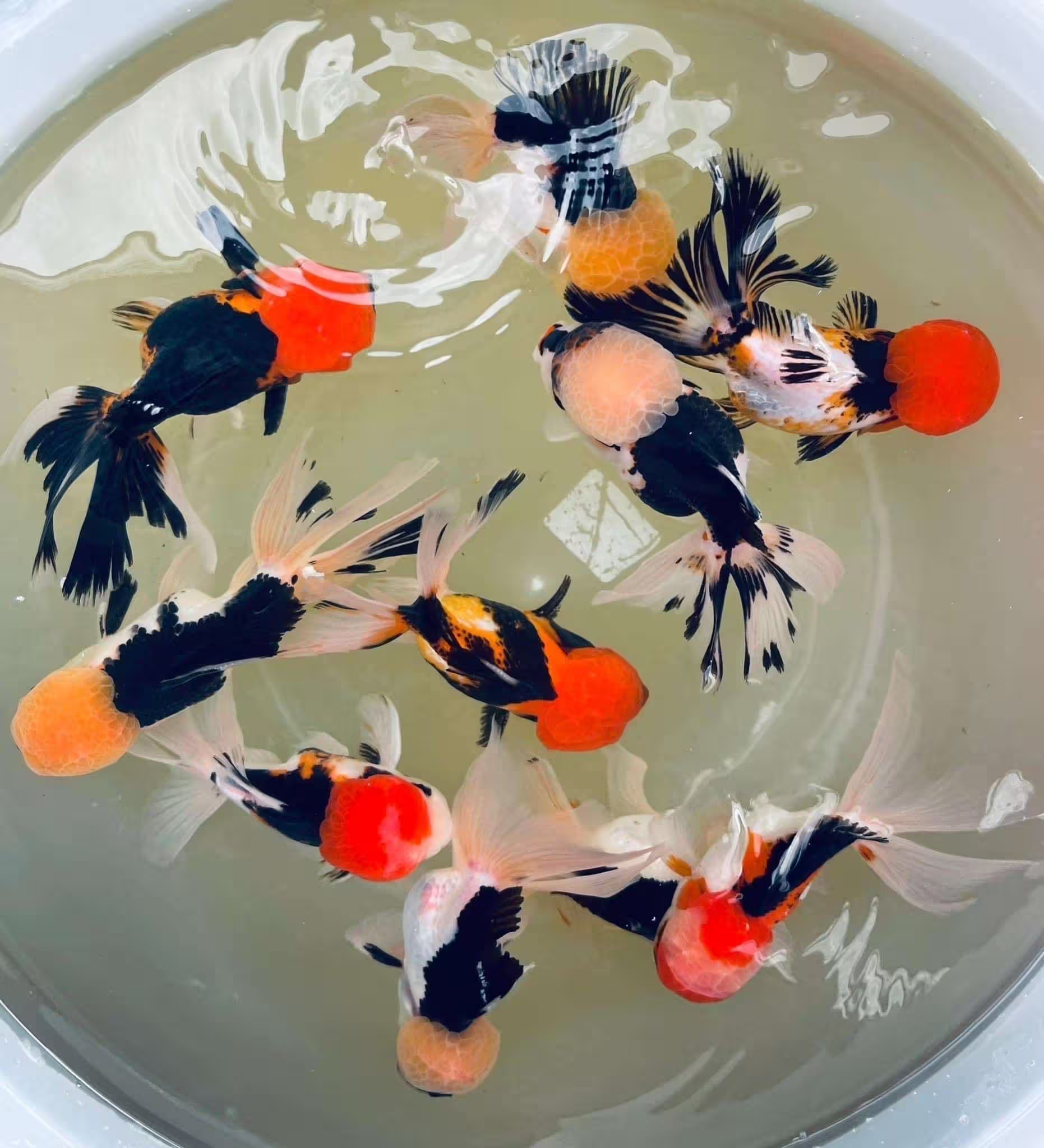
Tricolor Oranda
Carassius auratusFeatures a combination of red, black, and white colors in a balanced pattern. The colors should be vibrant and well-distributed, often with the wen being a different color than the body.
Shop Tricolor Oranda
Azuma Nishiki
Carassius auratusA nacreous-scaled (pearly) variety with a mix of metallic and translucent scales creating a shimmering effect. Colors may include red, orange, yellow, white, and blue in a calico pattern.
Shop Azuma Nishiki
Hana Fusa (Pompom Oranda)
Carassius auratusA unique variety featuring both the characteristic wen and nasal pompoms (fleshy growths on the nostrils). The pompoms should be equally developed and symmetrical.
Shop Pompom Oranda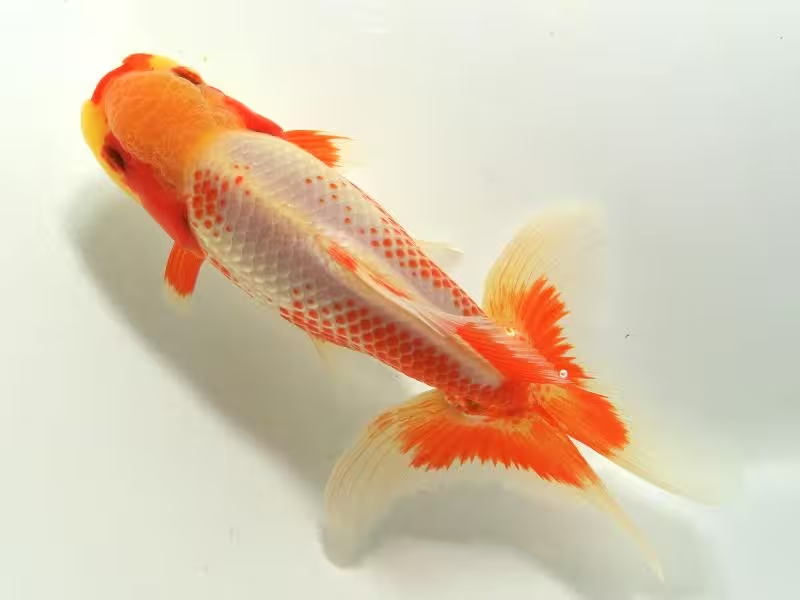
Nagate Oranda
Carassius auratusA long-bodied Japanese variety with a more streamlined shape than standard Orandas. The wen is typically smaller, and the fish is more agile while maintaining Oranda characteristics.
Shop Nagate Oranda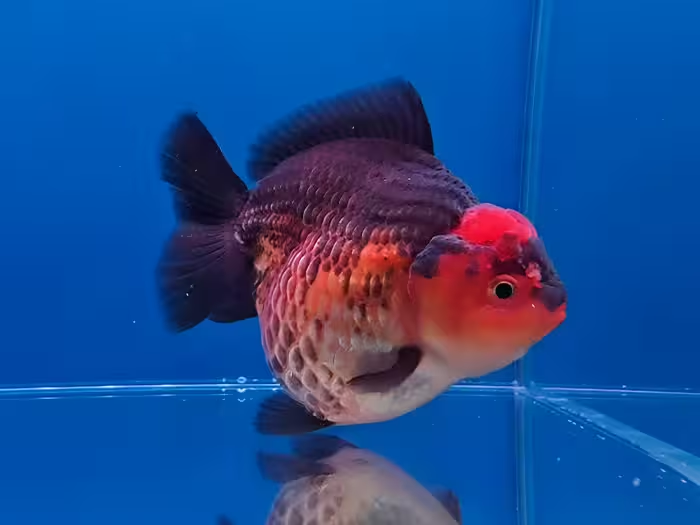
Apache Oranda
Carassius auratusA striking variety that must display both red and black colors on the body. The pattern should be balanced with neither color dominating. The wen is typically red.
Shop Apache Oranda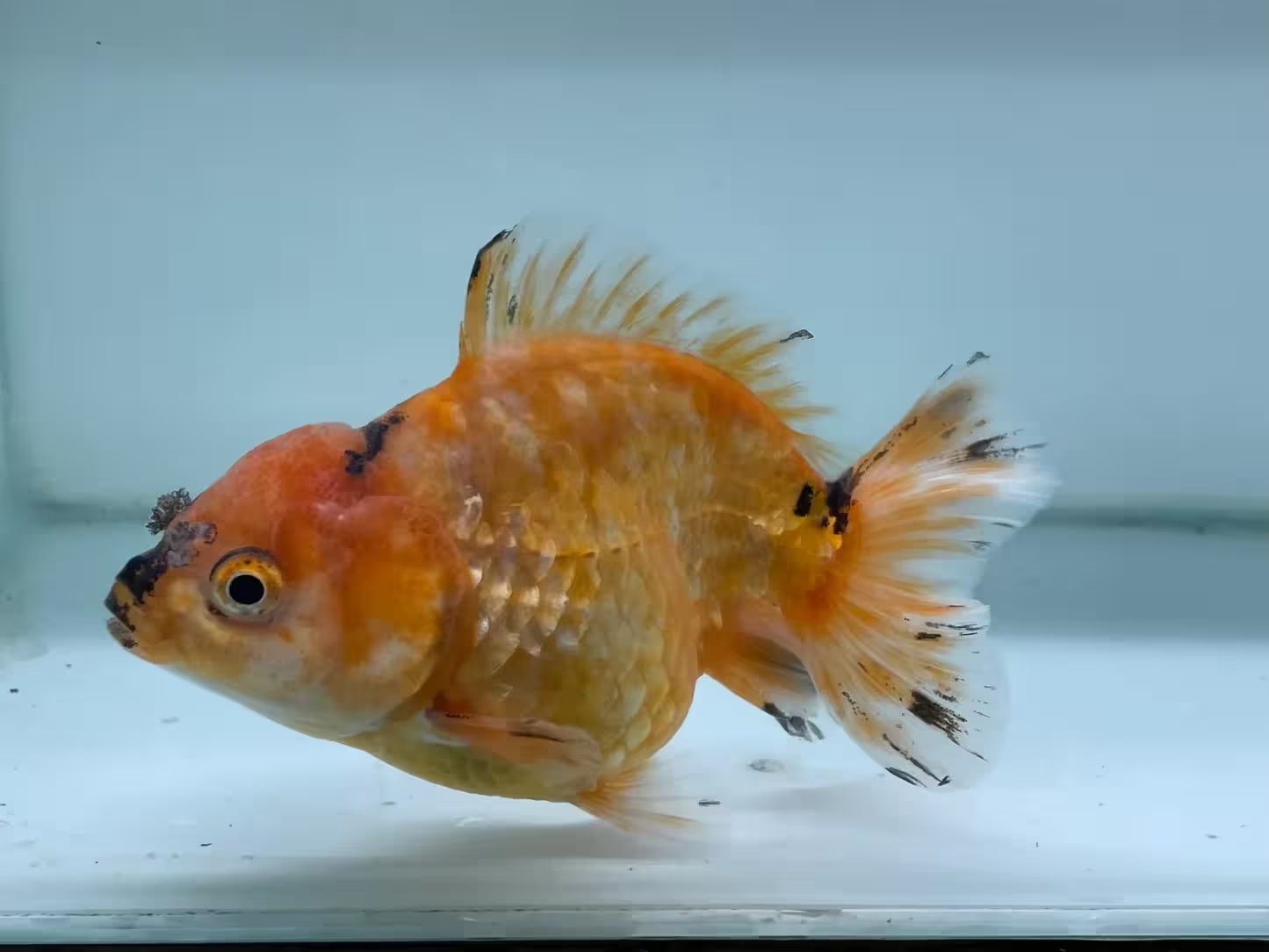
Ingot/Yuan-Bao Oranda
Carassius auratusCharacterized by an extremely short, round body and a box-shaped face. The name comes from its resemblance to ancient Chinese ingot currency. The wen is typically well-developed.
Shop Yuan-Bao Oranda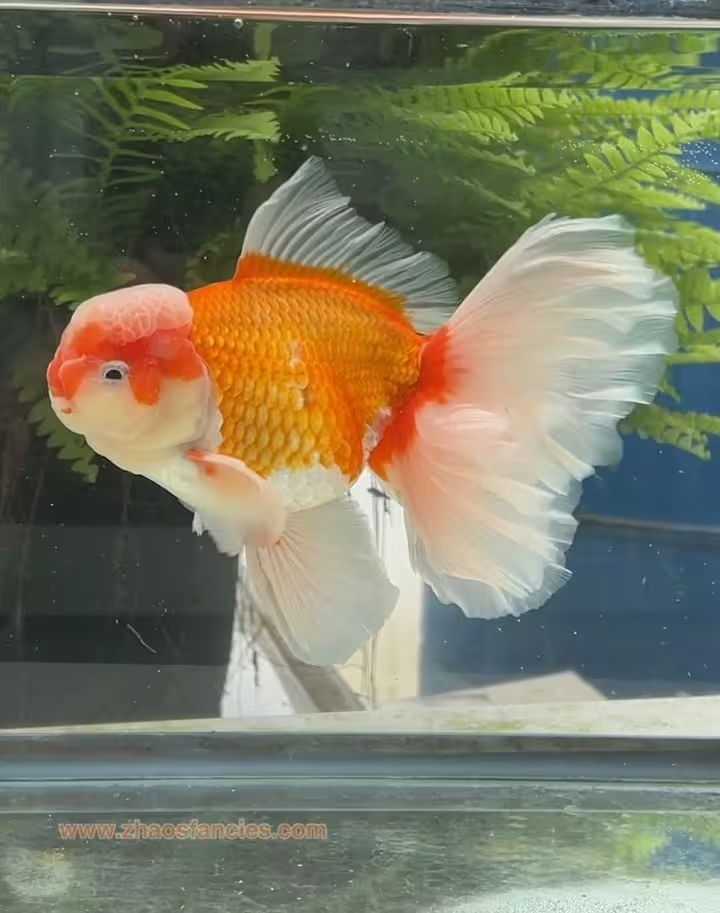
Jade Seal Oranda
Carassius auratusFeatures a white head (including the wen) with a red or orange body, resembling a traditional Chinese jade seal. The color contrast should be sharp and well-defined.
Shop Jade Seal Oranda
Platinum Oranda
Carassius auratusA solid white or silver variety with a metallic sheen. The wen should be the same color as the body. High-quality specimens have no yellow tint and a mirror-like shine.
Shop Platinum Oranda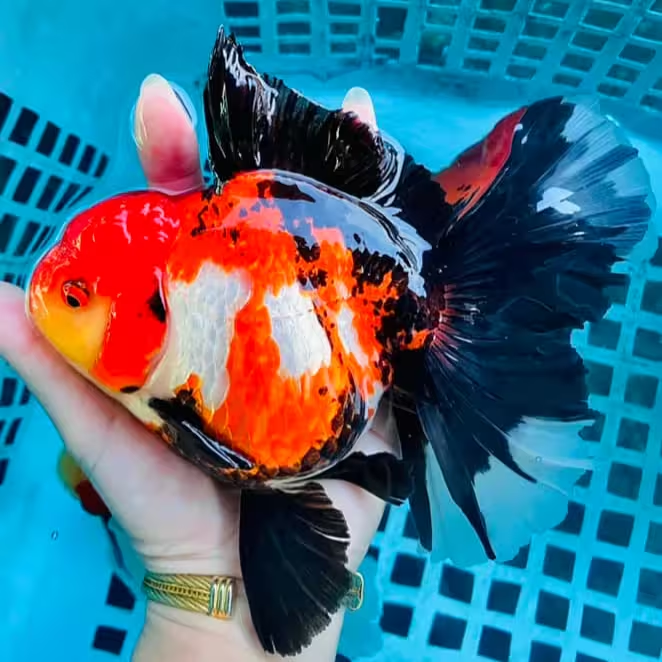
Thai Oranda
Carassius auratusSpecial varieties bred in Thailand known for their exceptional wen development and vibrant colors. Often have a more rounded body shape and may display unique color patterns.
Shop Thai OrandaComplete Oranda Goldfish Care Guide
Creating the Perfect Oranda Habitat
Orandas require specific tank conditions to thrive and develop their characteristic wen growth:
Tank Size Requirements
- Juveniles (under 3"): Minimum 20 gallons for 1-2 fish
- Adults (3-6"): 30 gallons for the first fish + 10 gallons per additional Oranda
- Show Specimens (6"+): 40 gallons for one fish, 75+ gallons for a group
- Note: Larger tanks provide more stable water conditions and room for growth
Filtration System
- Canister filters: Recommended for their superior mechanical and biological filtration (Fluval FX series ideal)
- Filter capacity: Should turnover the tank volume 4-6 times per hour
- Sponge pre-filters: Essential to protect delicate fins from intake
- Additional filtration: Consider adding a UV sterilizer for disease prevention
Substrate & Decor
- Substrate: Fine sand (0.5-1mm grain) or smooth gravel to prevent injury
- Decorations: Smooth rocks, driftwood with rounded edges
- Plants: Hardy varieties like Anubias, Java Fern (attach to decor, not planted)
- Avoid: Sharp objects, small openings where fish could get stuck
Pro Tip: Wen Development Environment
To encourage proper wen growth, maintain excellent water quality with 0 ammonia/nitrites and <20ppm nitrates. Add a gentle air stone for oxygenation without strong currents that could stress the fish. The wen grows most effectively in water temperatures between 68-72°F (20-22°C).
Optimal Water Conditions for Orandas
Maintaining pristine water quality is crucial for Oranda health and wen development:
| Parameter | Ideal Range | Danger Zone | Adjustment Methods |
|---|---|---|---|
| Temperature | 65-72°F (18-22°C) | <60°F or >75°F | Aquarium heater/chiller, room temp control |
| pH Level | 6.5-7.5 | <6.0 or >8.0 | Buffering substrates, peat filtration |
| Ammonia | 0 ppm | Any detectable level | Biological filtration, water changes |
| Nitrite | 0 ppm | Any detectable level | Cycled tank, bio-media |
| Nitrate | <20 ppm | >40 ppm | Live plants, water changes |
| GH | 4-20 dGH | <2 or >25 dGH | Mineral additives, RO water |
| KH | 3-8 dKH | <1 or >12 dKH | Baking soda (raise), peat (lower) |
Water Change Schedule
- Weekly: 30-40% water change for established tanks
- Bi-weekly: 50% change if heavily stocked
- New tanks: 20% changes 2-3 times weekly during cycling
- Use: Dechlorinated water matched to tank temperature
Nutrition & Feeding Guide
A balanced diet promotes vibrant colors, wen growth, and overall health:
Staple Diet
- High-quality pellets: Sinking varieties preferred (Hikari Lionhead, Saki-Hikari Fancy Goldfish)
- Protein content: 30-35% for juveniles, 25-30% for adults
- Feed amount: What they can consume in 2 minutes, 2-3 times daily
- Soak pellets: For 1 minute to prevent swim bladder issues
Supplemental Foods
- Vegetables: Blanched peas (deshelled), zucchini, spinach (2-3 times weekly)
- Live foods: Bloodworms, brine shrimp, daphnia (1-2 times weekly)
- Color enhancers: Spirulina, astaxanthin-containing foods
- Wen growth: Foods high in protein and vitamins B & D
Foods to Avoid
- Floating foods: Can cause air ingestion leading to swim bladder issues
- Mammalian fats: Beef heart, pork - difficult to digest
- Bread/crackers: Expand in digestive system
- Excessive carbohydrates: Can cause fatty liver disease
Feeding Schedule Example
Morning: High-quality sinking pellets (soaked)
Afternoon: Blanched vegetables or live food
Evening: Specialized formula (color enhancer or wen developer)
Weekly: Fasting day (no food) to prevent constipation
Health Maintenance & Disease Prevention
Orandas are susceptible to specific health issues that require proactive care:
Wen Overgrowth Issues
Symptoms:
- Wen growing over eyes (visual impairment)
- Redness or inflammation at growth edges
- White cotton-like fungal growth on wen
Treatment:
- Mild cases: Salt baths (1 tbsp aquarium salt per gallon for 15 minutes)
- Moderate cases: Antibacterial treatment (Kanamycin or Nitrofurazone)
- Severe overgrowth: Veterinary trimming under anesthesia
- Prevention: Maintain excellent water quality, avoid sharp decor
Swim Bladder Disorder
Symptoms:
- Difficulty maintaining buoyancy
- Floating upside-down or sinking
- Loss of appetite
Treatment:
- Fast for 3 days, then feed cooked deshelled peas
- Lower water level to reduce swimming effort
- Epsom salt bath (1 tsp per gallon for 15 minutes)
- Long-term: Switch to sinking foods, avoid overfeeding
Bacterial Infections
Symptoms:
- Red streaks in fins or body
- Ulcers or open sores
- Cloudy eyes or frayed fins
Treatment:
- Broad-spectrum antibiotic (Kanamycin, Erythromycin)
- Increase water temperature to 72-74°F (22-23°C)
- Add aquarium salt (1 tbsp per 5 gallons)
- Improve water quality through frequent changes
Preventive Health Measures
- Quarantine: 4-6 weeks for new fish
- Vaccination: Consider KHV vaccine in endemic areas
- Parasite control: Regular observation and treatment if needed
- Stress reduction: Maintain consistent environment, avoid overcrowding
Breeding Oranda Goldfish
Successful breeding requires careful preparation and attention to detail:
Breeder Selection (6-12 months before)
- Choose healthy specimens with desired traits
- Ideal ratio: 2 males per female
- Age: 2-4 years old for best results
Conditioning (4-8 weeks before)
- High-protein diet (bloodworms, brine shrimp)
- Gradual temperature reduction to 60°F (15°C)
- Increase daylight to 14 hours
Spawning Setup
- 50-75 gallon tank with spawning mops or plants
- Temperature increase to 68-72°F (20-22°C)
- Gentle aeration, no strong currents
Spawning & Fry Care
- Remove adults after spawning to prevent egg eating
- Eggs hatch in 4-7 days at 72°F (22°C)
- Feed fry infusoria, then baby brine shrimp
- Daily 10% water changes after first week
Genetic Considerations
When breeding Orandas, approximately 25-30% of fry will develop the characteristic wen. The rest may resemble fantails or other varieties. Selective breeding over generations improves wen development rates. Avoid breeding fish with:
- Asymmetrical body shapes
- Poor swimming ability
- Overly large wens that impair vision
Compatible Tank Mates for Orandas
While Orandas are peaceful, their slow movement and delicate fins require careful selection of tank companions:
Ideal Companions
- Other Orandas: Same variety or different colors
- Ryukins: Similar body shape and swimming ability
- Black Moors: Peaceful with comparable needs
- Lionheads: Another wen-developed variety
- Bubble Eye Goldfish: Similar care requirements
Species to Avoid
- Single-tail goldfish: Too fast and competitive during feeding
- Tiger Barbs: Known fin nippers
- Cichlids: Aggressive and require different water parameters
- Danios: Too active and may stress Orandas
- Plecos (some species): May suck on Oranda's slime coat
Community Tank Guidelines
For a harmonious community tank with Orandas:
- Maintain at least 20 gallons per Oranda plus additional space for tank mates
- Choose fish with similar temperature requirements (65-72°F)
- Select peaceful species that won't compete aggressively for food
- Monitor during feeding to ensure all fish get adequate nutrition
- Provide plenty of open swimming space with some sheltered areas
Ready to Start Your Oranda Goldfish Journey?
Explore our premium selection of healthy, vibrant Oranda Goldfish - each hand-selected for quality and vitality. Click below to browse our available varieties or learn more about goldfish care.
Download This Complete Care Guide
Get this comprehensive Oranda Goldfish encyclopedia in PDF format for offline reference or printing


